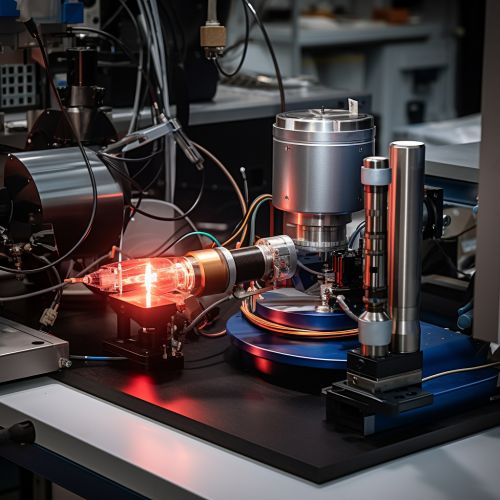Focused Ion Beam
Introduction
Focused Ion Beam (FIB) technology is a technique used primarily in the semiconductor industry, materials science and increasingly in the biological field for site-specific analysis, deposition, and ablation of materials. A FIB setup is a scientific instrument that resembles a scanning electron microscope (SEM). However, while the SEM uses a focused beam of electrons to image the sample in the chamber, a FIB instead uses a focused beam of ions.
History
The development of FIB technology started in the 1960s as a spin-off from the field of ion beam lithography. The first FIB instruments were dedicated to lithography, where the focused ion beam was used to modify or "write" materials at the nanoscale. The first commercial FIB tools, which appeared in the early 1980s, were also dedicated to such applications.
Working Principle
The FIB is composed of an ion source, an ion column, and a stage to hold and move the sample. The ion source generates a beam of ions (usually gallium) that is focused onto the sample by the ion column. The interaction between the ions and the sample results in the sputtering of the sample material, which can be used for imaging or milling the sample.


Applications
FIB is used in a variety of applications, including:
Circuit Edit
In the semiconductor industry, FIB is used for circuit edit, the process of modifying the circuitry of a semiconductor device after it has been fabricated. This is done by using the FIB to mill away unwanted material and depositing new material where needed.
Failure Analysis
FIB is also used in failure analysis of semiconductor devices. The FIB can be used to selectively remove material to reveal hidden features, or to prepare thin samples for transmission electron microscopy (TEM) or atom probe tomography (APT).
Material Science
In materials science, FIB is used to prepare samples for a variety of analytical techniques, including TEM, APT, and secondary ion mass spectrometry (SIMS). It is also used to create prototypes of micro- and nano-structures.
Biology
In the biological field, FIB is used to prepare samples for electron microscopy. This is done by using the FIB to mill away material, revealing the interior structure of the sample.
Advantages and Limitations
While FIB is a powerful tool for material modification and analysis, it also has its limitations. The primary advantage of FIB is its ability to selectively and precisely remove material, allowing for site-specific analysis and modification. However, the use of ions for milling can also cause damage to the sample, particularly in the case of sensitive materials. Furthermore, the use of gallium ions can result in the implantation of gallium into the sample, which may not be desirable in some cases.
